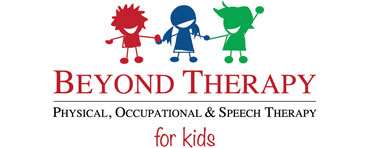“Eww!” I laughed as I crinkled my nose and tickled my 1-year-old nephew, Arrow. I was changing his diaper and enjoying the one-on-one time we were having as his parents were out to dinner. I was taken aback when my nephew squealed with delight at my twisted face. Encouraged by his reaction, I continued to talk to Arrow and exaggerate my facial expressions and he continued to jabber back. It was in this moment that I realized the power of routines. Even the simplest routines offer huge opportunities to bond with children, to model and elicit language, and to engage in meaningful interaction (Childress, 2014).
In fact, routines that occur within a child’s natural environment provide the most effective framework for learning as routines are “predictable, functional, and occur numerous times throughout the day” (Woods, Kashinath & Goldstein, 2004). Though they may last just a few minutes, the amount of language that can be internalized and used in just one routine task can contribute greatly to a child’s overall language development (Jennings, Hanline & Woods, 2012).
So, what are some examples of common routines we take part in each day?
Brushing teeth
Attempting to wrangle a toddler into brushing their teeth can too easily turn into an all-night ordeal. So, turning this into a fun routine may make it less of a daunting task. We can sit our kiddo on the counter and let them look at themselves in the mirror. (And what toddler doesn’t love watching themselves in the mirror?) We can ask them questions such as, “Who do you see?” and we can help them answer the question by providing a model. “I see Baby!” “Baby!” We can encourage them to clap and imitate other actions while looking in the mirror. While engaging in any routine, we should narrate everything we do. So, as we run their toothbrush under water and push out the toothpaste we should explain what we’re doing. As we brush their tiny teeth we can sing songs or use phrases such as “brush brush brush”. Brushing our teeth is something we all do twice a day, so why not make it meaningful?
Snack time
We can become all too complacent during snack time and mindlessly hand our kiddos puffs, juice, animal crackers, or whatever it is they might be eating. But it will benefit us so much if we remember that this brief time allows for some awesome exchanges. As our little ones wait expectantly in their high chairs, they often tend to be laser-focused on our actions and what we’re doing. As we take food out of the fridge or pantry, we can label it and hand it to them. When they turn it over a few times and realize they can’t open it, we can model the word “open” and encourage imitation as we open their snack. The words “eat”, “yum”, and “more” are some of the most common words we throw around during mealtimes. So, use them, and give your child a moment or two to allow them the opportunity to use these words too. Let your snack time be abundant in language.
Grocery shopping
I may be the only one guilty of this, but I find myself at the grocery store almost daily because I can never seem to remember all the ingredients I need for each meal. Lucky for all of us frequent-shoppers, grocery shopping is a prime opportunity for language learning and it’s also the perfect set up for face-to-face time in the cart. While grocery shopping, you can name every item you place in your cart. “Here is the milk. Mmm we love milk.” If your little one requests something such as “banana”, you can add to their utterance and say, “Yes, we do need more bananas! Let’s get some bananas.” You can engage in communication with them as you fill your cart, scan your items, bag them, and place them in the car.
Bedtime
While everyone’s bedtime routine is different, it is the perfect opportunity to pour out language and to soak up every minute with your babe before the new day. Sitting down with your little one before bed allows for some precious face-to-face interaction. You can sing or recite nursery rhymes together, you can read a book, or you can simply cuddle each other and use common phrases such as, “I love you!”, “Night night baby!”, “Sweet dreams!”, See you in the morning!” You can also allow your child to touch your face- your nose, eyes, and mouth- and you can label each body part as you play. The possibilities with the nightly bedtime routine are truly endless.
It’s so easy to feel too rushed in the midst of a busy day to sit down and practice language with our babies. But in truth, the most beneficial language growth comes from the seemingly little things we do each day. From the minute we wake up in the morning to the minute we go to bed at night, our days are full of routines. And routines = opportunities. So, next time you find yourself at the grocery store for the second time in one day, or fighting with your little one about brushing their teeth, remember that these seemingly fleeting moments matter. Pack these routines full of language and then, be amazed.
References:
Childress, D. (2014). Which activity is really routines-based? Retrieved March 1, 2020, from https://veipd.org/earlyintervention/2014/02/20/which-activity-is-really-routines-based/
Jennings, D., Hanline, M., & Woods, J. (2012). Using routines-based interventions in early childhood special education. Dimension of Early Childhood, 40, 2, 13-23.
Woods, J., Kashinath, S., & Goldstein, H. (2004). Children’s communication outcomes. Journal of Early Intervention, 26, 175-193.
Nikki Hajje, MS, SLP, is a speech-language pathologist at Beyond Therapy for Kids in Ridgeland, Mississippi. She has special interests in bilingual speech-language services and phonological disorders. Originally from California, she’s now enjoying living in SEC nation, learning how to talk like a Southerner, and taking in all the Southern hospitality.
